
This source discusses the purpose of research writing.
- Subject:
- Composition and Rhetoric
- English Language Arts
- Material Type:
- Textbook
- Provider:
- LibreTexts
- Author:
- Athena Kashyap
- Erika Dyquisto
- Date Added:
- 06/28/2023

This source discusses the purpose of research writing.

1, 2, 3 Write! provides step-by-step instruction to build college writing skills. It combines comprehensive grammar and mechanics review with sentence, paragraph and essay writing techniques and practice. Links to example essays from professional and student writers demonstrate the skills studied and provide reading and critical thinking opportunities.

This book is meant to be a short course to help you prepare to move your teaching online. Do a chapter a day. Or just pick the ones you like.

Chemistry is the study of matter. Our understanding of chemical processes thus depends on our ability to acquire accurate information about matter. Often, this information is quantitative, in the form of measurements. In this lab, you will be introduced to some common measuring devices, and learn how to use them to obtain correct measurements, each with correct precision. A metric ruler will be used to measure length in centimeters (cm).
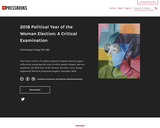
This book consists of student-authored original research papers collectively examining the ways in which gender shaped, and was shaped by, the 2018 Year of the Woman elections.

Learn flat pattern techniques as they apply to the design of 20th century clothing.
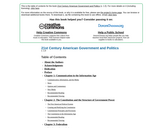
Textbook focusing on American Government and the specificities of the American political system. In covering American government and politics, this text:
• introduces the intricacies of the Constitution, the complexities of federalism, the meanings of civil liberties, and the conflicts over civil rights;
• explains how people are socialized to politics, acquire and express opinions, and participate in political life;
• describes interest groups, political parties, and elections—the intermediaries that link people to government and politics;
• details the branches of government and how they operate; and
• shows how policies are made and affect people’s lives.

In the early part of the 21st century, several LGBTQIA+ focused clothing brands emerged on the market. The purpose of this project is to document the history of each brand using the oral history method. We conducted oral histories with 24 brands with questions ranging from their own personal histories to how and why they started the brand. We are interested in the lives of the individuals who founded the brands in addition to the entire story of each brand from idea development to today so that way these stories can be a documented as an important part of fashion and retail history. We purposefully make these oral history transcripts available to the community in order to move research beyond the walls of the academy and make knowledge accessible to everyone.

Our objective with this resource is to walk you through the essential steps in creating compelling and engaging 360 video experiences. While some prior experience with photography or videography can help, the technology available now gives anybody the ability to produce this type of amazing content.

Textbook chapter used in CSI EDUC 204 Families, Communities, and Culture.

Textbook chapter used in CSI EDUC 204 Families, Communities, and Culture.
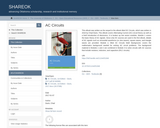
This eBook was written as the sequel to the eBook titled DC Circuits, which was written in 2016 by Chad Davis.
This eBook covers Alternating Current (AC) circuit theory as well us a brief introduction of electronics. It is
broken up into seven modules. Module 1 covers the basic theory of AC signals. Since only DC sources are used in
the first eBook, details of AC signals such as sinusoidal waveforms (or sine waves), square waves, and triangle
waves are provided. Module 2, titled AC Circuits Math Background, covers the mathematics background needed
for solving AC circuit problems. The background material in Modules 1 and 2 are combined in Module 3 to solve
circuits with AC sources that include resistors, inductors, and capacitors (RLC circuits).

Welcome to the AC Electrical Circuit Analysis, an open educational resource (OER). The goal of this text is to introduce the theory and practical application of analysis of AC electrical circuits. It assumes familiarity with DC circuit analysis. If you have not studied DC circuit analysis, it is strongly recommended that you read the companion OER text, DC Electrical Circuit Analysis before continuing. Both texts are offered free of charge under a Creative Commons non-commercial, share-alike with attribution license. For your convenience, along with the free pdf and odt files, print copies are available at a very modest charge. Check my web sites for links.

An introduction to the ADDIE model.

This OER is a free alternative to expensive Introduction to Cultural Anthropology textbooks. It includes a full textbook and several original videos, 10 "challenges" (assignments), a hub of original and found resources for teaching and learning anthropology, a “connected course” of many faculty around the world sharing instructional materials, an open course freely available to anyone online, and an emerging producer of original anthropological videos and other digital content.
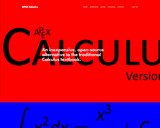
APEX Calculus is a calculus textbook written for traditional college/university calculus courses. It has the look and feel of the calculus book you likely use right now (Stewart, Thomas & Finney, etc.). The explanations of new concepts is clear, written for someone who does not yet know calculus. Each section ends with an exercise set with ample problems to practice & test skills (odd answers are in the back).
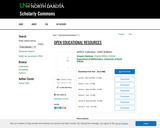
This text comprises a three–volume series on Calculus. The first part covers material taught in many “Calculus 1” courses: limits, derivatives, and the basics of integration, found in Chapters 1 through 6. The second text covers material often taught in “Calculus 2”: integration and its applications, along with an introduction to sequences, series and Taylor Polynomials, found in Chapters 7 through 10. The third text covers topics common in “Calculus 3” or “Multivariable Calculus”: parametric equations, polar coordinates, vector–valued functions, and functions of more than one variable, found in Chapters 11 through 15. All three are available separately for free.
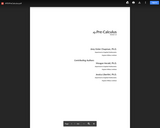
This text was written as a prequel to the APEXCalculus series, a three–volume series on Calculus. This text is not intended to fully prepare students with all of the mathematical knowledge they need to tackle Calculus, rather it is designed to review mathematical concepts that are often stumbling blocks in the Calculus sequence. It starts basic and builds to more complex topics. This text is written so that each section and topic largely stands on its own, making it a good resource for students in Calculus who are struggling with the supporting mathemathics found in Calculus courses. The topics were chosen based on experience; several instructors in the Applied Mathemathics Department at the Virginia Military Institute (VMI) compiled a list of topics that Calculus students commonly struggle with, giving the focus of this text. This allows for a more focused approach; at first glance one of the obvious differences from a standard Pre-Calculus text is its size.

Ce livre est un hommage à son travail dont la portée et le caractère précurseur nous sont plus sensibles que jamais, près d’un demi-siècle après la publication de ses articles majeurs. Puissent les jeunes d’Afrique et d’ailleurs être nombreux à suivre son exemple! À noter que les textes présentés ici (à l’exception de l’article de 1969 sur « La conférence de Nairobi » et du cahier photographique) sont aussi publiés dans l’ouvrage que j’ai co-dirigé avec Mamadou Badji Du soleil pour tous. L’énergie solaire au Sénégal : un droit, des droits, une histoire (2018, Éditions science et bien commun).

This course is designed to provide an engaging and personally relevant overview of the discipline of Abnormal Psychology. You will examine the cognitive and behavioral patterns which impair personal effectiveness and adjustment. Students will provide much of the substantive content and teaching presence in this course. Additional content has been curated from "The Noba Project (http://nobaproject.com/)" and "Abnormal Psychology: An e-text! (http://abnormalpsych.wikispaces.com/).